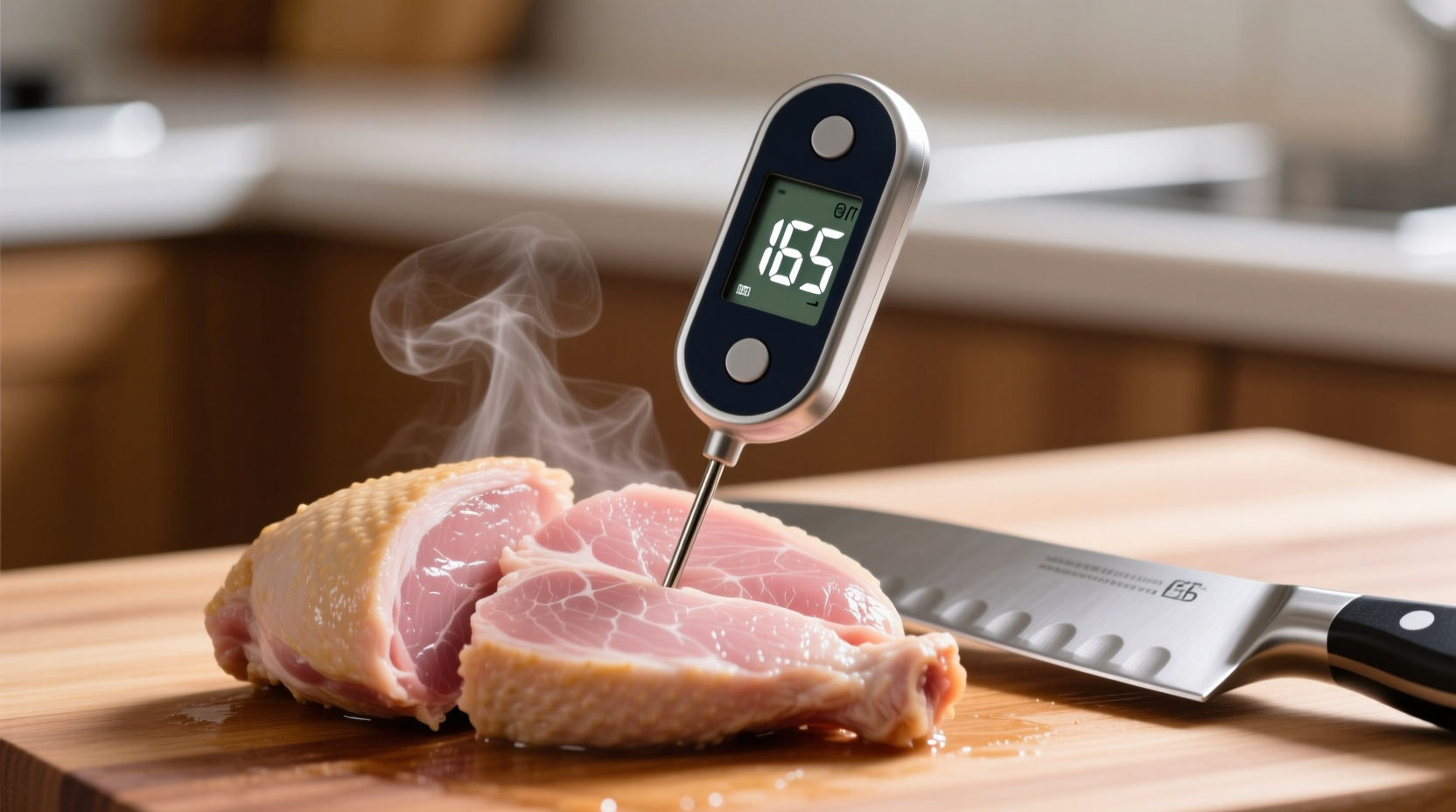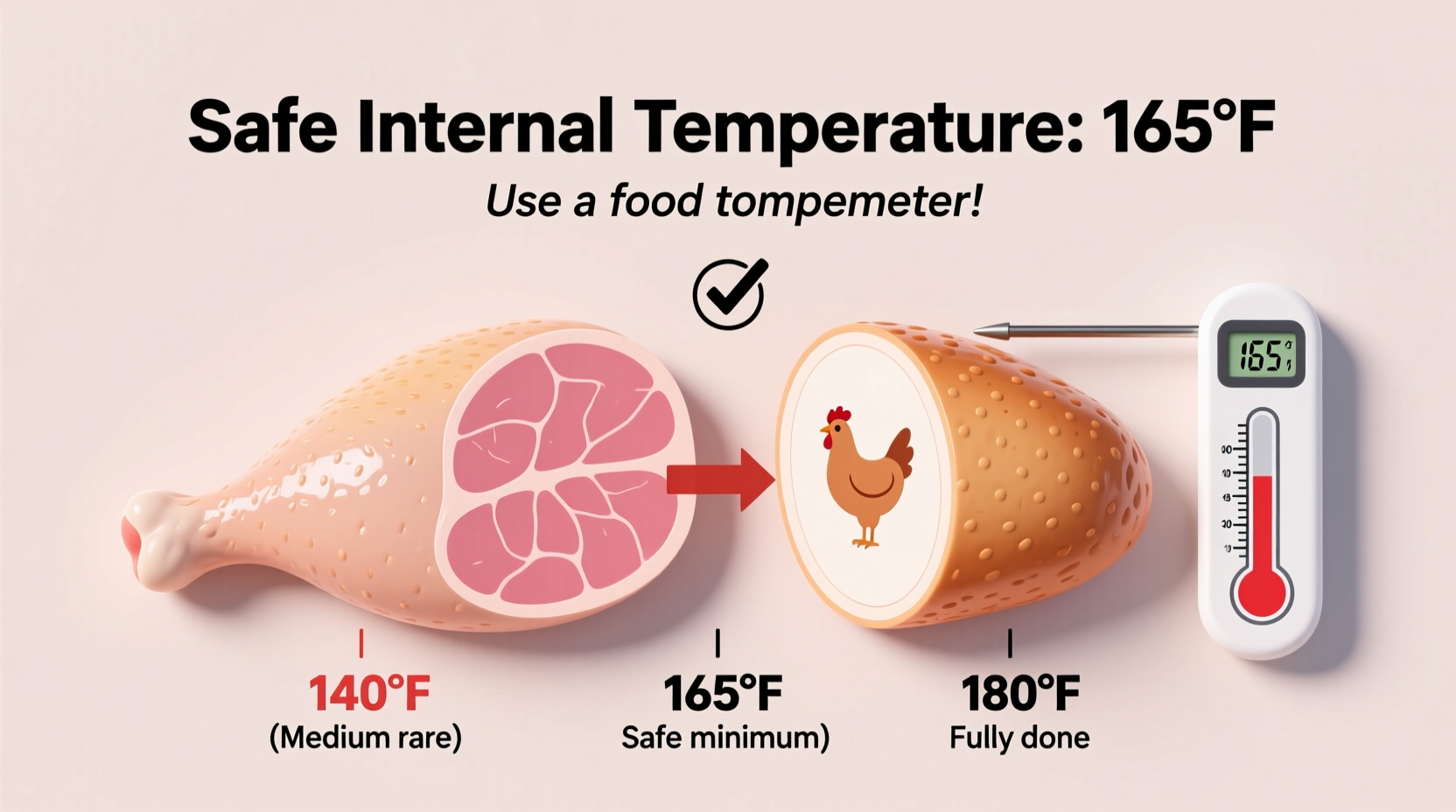Cooking chicken to the correct temperature isn't just about avoiding dry meat—it's critical for preventing foodborne illness. Every year, undercooked poultry causes millions of food poisoning cases globally. The USDA Food Safety and Inspection Service mandates 165°F as the minimum safe internal temperature for all chicken products. This single measurement destroys dangerous pathogens while preserving juiciness when monitored properly. In this guide, you'll learn exactly how to achieve this temperature reliably, avoid common mistakes, and protect your family's health.

Why 165°F Is Your Safety Threshold
Chicken naturally harbors bacteria like Salmonella and Campylobacter that cause severe gastrointestinal illness. These pathogens die instantly at 165°F, as confirmed by the USDA's Food Safety and Inspection Service. Lower temperatures—even 160°F—require extended holding times to achieve the same safety margin, which home cooks can't reliably control. The CDC reports poultry as a leading source of foodborne outbreaks, with improper cooking being the primary culprit. Always prioritize thermometer verification over visual cues like color or juice clarity.
Measuring Temperature: The Professional Method
Accurate measurement requires specific technique:
- Use an instant-read digital thermometer (calibrated quarterly using ice water or boiling point tests)
- Insert probe into the thickest part of meat, avoiding bone or fat pockets
- Wait 10-15 seconds for reading stabilization
- Check multiple spots in larger cuts like whole chickens
| Measurement Error | Food Safety Risk | Professional Correction |
|---|---|---|
| Thermometer touching bone | Readings 5-10°F higher than actual meat temp | Reposition probe into muscle tissue |
| Single-spot testing | Cold zones may remain under 165°F | Check 3+ locations in thick cuts |
| Not calibrating regularly | Drifting accuracy up to 15°F error | Test in ice water (32°F) monthly |
Context Matters: When 165°F Applies Universally
This temperature standard applies consistently across all chicken preparations:
- All cuts (breasts, thighs, wings, ground chicken)
- All cooking methods (grilling, baking, sous vide, frying)
- All forms (fresh, frozen, pre-brined)
While professional chefs sometimes remove chicken at 160°F anticipating 5°F carryover cooking during resting, the USDA emphasizes that 165°F must be verified as the minimum safe point. Never assume carryover cooking will compensate for under-temperature cooking—always measure at the conclusion of cooking.
Avoiding Common Pitfalls
Many home cooks rely on unreliable indicators:
- "Clear juices" myth: Juices can run clear at unsafe temperatures below 165°F
- Color deception: Pink tints may persist even at safe temperatures due to myoglobin
- Texture guessing: Firmness varies by cut and cooking method
The FDA Food Code explicitly states that visual assessment alone cannot verify poultry safety. Invest in a $10 instant-read thermometer—it's your most critical kitchen tool for preventing illness.
Leftover Safety Protocol
After cooking, maintain safety through proper storage:
- Cool cooked chicken within 2 hours (1 hour if ambient temperature exceeds 90°F)
- Store in shallow containers below 40°F
- Reheat leftovers to 165°F before consuming
Temperature abuse during cooling causes more foodborne outbreaks than undercooking itself, according to USDA incident data.
Frequently Asked Questions
Can chicken be safe at 160 degrees?
No. The USDA requires 165°F for instant pathogen destruction. While carryover cooking may raise temperature after removal from heat, you must verify 165°F is reached. Cooking to 160°F requires holding for over 1 minute to achieve equivalent safety—impossible to monitor accurately at home.
Why does my thermometer show different readings in one chicken?
Temperature varies within poultry due to thickness differences and bone proximity. Always check multiple spots—especially the thickest section and areas near joints. The USDA recommends testing at least three locations in whole birds to identify cold zones.
Is pink chicken always unsafe?
No. Pink hues can persist in safely cooked chicken due to myoglobin reacting with oven gases or nitrites in feed. The USDA confirms color is unreliable—only a thermometer provides safety verification. Always measure internal temperature regardless of appearance.
How do I calibrate my thermometer?
Use the ice-water method: Fill a glass with ice and cold water, stir for 30 seconds, then insert probe. It should read 32°F (0°C). For boiling point verification (altitude-adjusted), it should show 212°F (100°C) at sea level. Adjust according to manufacturer instructions if readings are off.











 浙公网安备
33010002000092号
浙公网安备
33010002000092号 浙B2-20120091-4
浙B2-20120091-4